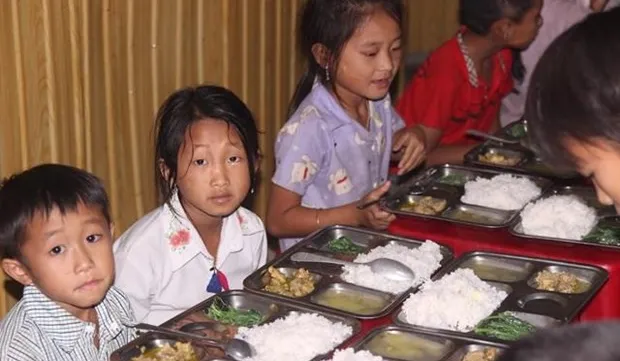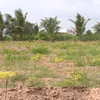Schools become home for ethnic children

In a bid to help them concentrate on their studies, the ethnic minority students are given meals and places to sleep.
It has helped improve social skills and make them feel more attached to the school, teachers and friends.
Huoi Tu 2 Primary School in Ky Son District, is more than 300 kilometres away from Vinh City and one of the most disadvantaged areas of the province.
At 5pm from Monday to Friday, students, mostly Mong ethnic minorities, gather at the kitchen of the school to get their tray of food.
On the tray, there are four dishes, including rice, vegetables, meat and broth, which ensures nutrition for students after a long day of study.
After dinner, students and teachers will have time for entertainment activities learning folk games, new songs and stories before going to bed.
The routine has been implemented at the school for the past three years.
Nguyen The Vinh, principal of Huoi Tu 2 Primary School said the school applied the boarding school model, which provided meals and sleeping places for students since the academic year of 2016-2017.
The model eased the difficulties of teaching and studying of both teachers and students.
Vinh said two thirds of pupils were from poor households and lived tens of kilometres away from the school.
Previously, these students had to study at five different temporary classrooms, which was made from bamboo and ill-equipped.
Both teachers and students had to walk on mountainous muddy roads to get to class.
That’s why the number of students dropping out of school remained high.
Figures from the Ministry of Education and Training in the academic year of 2016-2017 showed up to 510,000 students dropped out of school after two weeks of the new academic year.
There were more than 765,220 students studying at 1,575 schools in the province.
Vinh said since the school applied the model, fewer students were absent from class after the weekends.
The cost of the meals has been supported by the central province’s State budget and by parents.
Teachers would take turns to go to the market to buy food and cook meals. They even planted vegetable, raised chickens and pigs to vary the menu.
Apart from lessons, students would learn how to socialise, enlarge their social knowledge and become self-confident.
These activities would help change outdated customs and lifestyles while preserving and promoting the national cultural identity for students, Vinh said.
Thai and Kho Mu students at Ta Ca ethnic boarding school enjoy the same routine.
Cut Thi Thuy, principal of Ta Ca ethnic boarding school said there were 71 students staying at the school.
The school had been facing many difficulties when implementing the model as there were no electricity and a shortage of standard toilets and basic items.
However, Thuy said the model helped parents feel secure about their children’s study.
Thuy said she had encouraged parents to donate basic items such as beds, pillows and blankets for students, but it still wasn’t enough.
Teachers said the model had increased study time and helped improve interaction between teachers and students. Teachers could take care of students both physically and spiritually.
As many as 12 out of 29 schools in Ky Son District have applied the model.
Phan Van Thiet, head of Ky Son District’s Education and Training Division, said the office asked the schools to pick up more students from temporary classrooms to stay at the schools this month, so students would get better care.
Five schools have managed to persuade students from third to fifth grades to stay at school.
The model would create better condition to organise the teaching of IT and English for them following the new curriculum in the future, he said./.
Tags:





